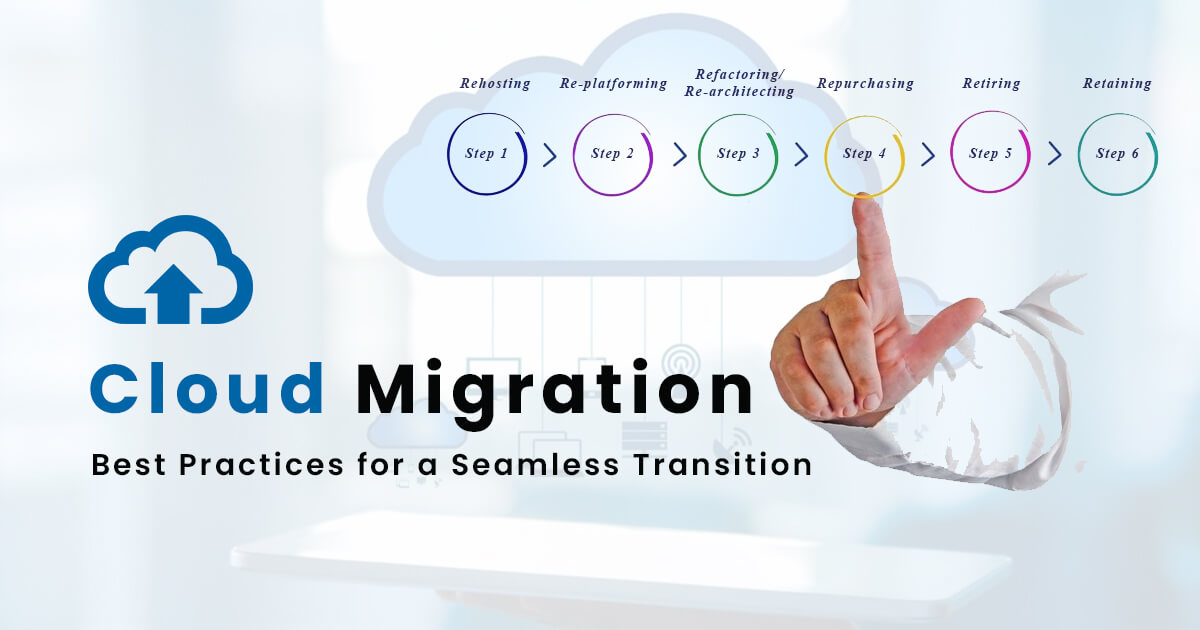Cloud migration has become a strategic necessity for organizations looking to leverage the scalability, flexibility, and cost-efficiency that cloud platforms offer. However, moving your operations to the cloud isn’t just about flipping a switch. It requires careful planning, execution, and management to ensure a smooth transition with minimal disruptions. This blog will explore the best practices for seamless cloud migration, covering essential aspects such as planning and preparation, choosing the right cloud provider, the migration process itself, security and governance considerations, and the importance of testing and validation.
Cloud Migration Planning and Preparation
The first and arguably most critical step in a successful cloud migration is thorough planning and preparation. Without a solid plan, even the best cloud migration tools and techniques will likely fall short.
Assessing Current Infrastructure
Start by evaluating your current IT infrastructure. Identify which applications, data, and workloads are suitable for migration. Not all components need to be moved to the cloud, and some might require modification to operate effectively in a cloud environment. This assessment should include an inventory of your assets, dependencies between applications, and an understanding of current performance baselines.
Defining Clear Objectives
What do you want to achieve with cloud migration? Whether it’s cost savings, improved performance, or enhanced scalability, having clear objectives will guide your entire migration strategy. These objectives will help you prioritize which applications to move first and determine the success criteria for your migration.
Establishing a Timeline
A well-defined timeline is crucial for managing the migration process. Break down the migration into phases, starting with a pilot migration to test your approach and tools. Ensure that your timeline is realistic, allowing time for troubleshooting and adjustments as needed.
Choosing the Right Cloud Provider
Selecting the right cloud provider is a crucial decision that can significantly impact your migration’s success. The provider you choose will dictate the services, tools, and support available to you throughout the migration and beyond.
Evaluating Cloud Providers
Consider factors like the provider’s range of services, pricing models, and compliance standards. Look for a provider that offers the features you need, whether that’s advanced machine learning capabilities, robust security features, or specialized services for your industry.
Comparing Service-Level Agreements (SLAs)
Review the SLAs offered by potential cloud providers. These agreements outline the performance and availability guarantees that the provider commits to. Make sure the SLAs align with your business requirements, especially for mission-critical applications.
Consideration of Multi-Cloud and Hybrid Cloud Options
Sometimes, a single cloud provider may not meet all your needs. In such cases, a multi-cloud or hybrid cloud strategy may be more appropriate. Multi-cloud involves using services from multiple providers, while hybrid cloud combines on-premises infrastructure with cloud services. Both strategies can offer greater flexibility and reduce the risk of vendor lock-in.
The Cloud Migration Process
With a plan in place and a cloud provider chosen, it’s time to execute the migration. This phase involves moving your applications, data, and workloads to the cloud.
Choosing a Migration Strategy
There are several migration strategies to consider, each with its own benefits and challenges:
- Rehosting (“Lift and Shift”): This involves moving your applications to the cloud with minimal changes. It’s fast and straightforward but may not take full advantage of cloud-native features.
- Replatforming: Similar to rehosting but with slight modifications to optimize your applications for the cloud environment.
- Refactoring/Re-architecting: This involves a complete overhaul of your applications to leverage cloud-native features fully. It’s the most complex but offers the greatest benefits in terms of performance and scalability.
- Repurchasing: Moving to a different product, often a SaaS platform, which means abandoning existing applications in favor of a new cloud-based solution.
- Retiring: Identifying which applications are no longer useful and can be turned off rather than migrated.
- Retaining: Keeping certain applications on-premises due to latency requirements, regulatory needs, or other factors.
Data Migration
Data migration is often the most challenging part of cloud migration. Ensure that your data is clean and organized before the move. Consider using cloud-native data transfer tools provided by your cloud provider to facilitate the migration. Data integrity and security should be top priorities throughout this process.
Application Migration
When moving applications, start with less critical ones to minimize risk. This also allows your team to become familiar with the migration tools and processes. Use the lessons learned from these initial migrations to refine your approach before tackling more critical applications.
Ensuring Security and Governance
Security is a primary concern when migrating to the cloud. The transition introduces new vulnerabilities, making it essential to establish robust security measures and governance policies.
Implementing Security Best Practices
- Encryption: Ensure that data is encrypted both in transit and at rest to protect sensitive information.
- Identity and Access Management (IAM): Implement strict access controls to prevent unauthorized access to your cloud resources.
- Compliance: Make sure that your cloud infrastructure complies with industry regulations such as GDPR, HIPAA, or PCI-DSS, depending on your industry.
Governance and Policy Management
Establish clear governance policies to maintain control over your cloud environment. This includes defining who has access to what resources, monitoring cloud usage to prevent sprawl, and regularly reviewing policies to adapt to changes in your business or cloud services.
Testing and Validation
Testing and validation are critical to ensuring that your cloud migration is successful and that everything works as expected in the new environment.
Pre-Migration Testing
Conduct thorough testing before the actual migration. This includes compatibility testing to ensure your applications will run in the cloud environment, and performance testing to compare the expected performance against the current setup.
Post-Migration Validation
After the migration, validate that all applications and data have been transferred correctly. Perform functionality testing to ensure that applications are working as intended. Conduct performance testing again to verify that the cloud environment meets or exceeds the benchmarks established during the planning phase.
Ongoing Monitoring and Optimization
Cloud migration doesn’t end once your systems are up and running in the cloud. Continuous monitoring is essential to detect and resolve issues early. Use the monitoring tools provided by your cloud provider to keep an eye on performance, security, and costs. Regularly review your cloud setup to optimize for cost, performance, and scalability.
Conclusion
Cloud migration is a complex but rewarding process that can transform your organization’s IT infrastructure. By following these best practices—careful planning and preparation, selecting the right cloud provider, executing a well-thought-out migration process, ensuring security and governance, and conducting thorough testing and validation—you can achieve a seamless transition to the cloud. With the right approach, your organization can fully harness the power of the cloud, driving innovation and growth in today’s competitive landscape.




